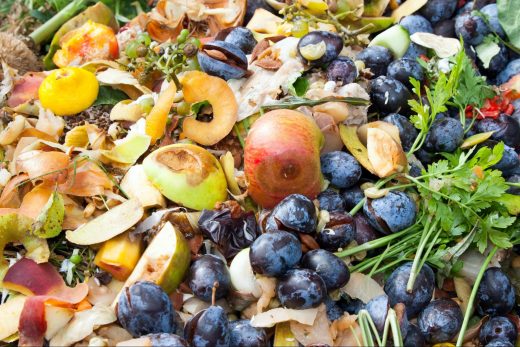
The United States discards more food than any other country in the world, even when accounting for population size. Not all of this food waste comes from individual homes — 40% of all U.S. food waste comes from the culinary industry.
This edition of Weekly Bites reviews three corners of the culinary industry that are making an effort to reduce food waste.
Why is food waste such a concern? Food that’s sitting in a landfill has a profound impact on the environment. The production of wasted food in the United States produces the same amount of greenhouse emissions as 3 million cars. Food that’s wasted not only takes up non-renewable energy to produce, but it also takes up energy to process in landfills.
In addition to the environmental impact of discarded food, consider that 1 in 7 children did not have access to enough food in 2019, and that number is only growing. Americans waste $218 billion a year on food that ends up in landfills. That’s $218 billion that could be used to feed children who are going hungry. Without systems in place to prevent food waste, the parity between those who can afford nutritious foods and those who cannot will continue to widen.
Although large-scale systems will make the most impact in reducing food waste, leaders in the beverage and culinary industries can implement small changes to reduce their food waste and lower their environmental impact. This edition of Weekly Bites celebrates three companies who are doing just that.
Coors… milk?
People have been on the plant-based milk train for a while now, and it seems like every year another plant-based milk rises in popularity. Oat milk is having its moment now, but the next new craze may just be barley milk. Specifically, barley milk made by brewers.
Smaller breweries have been making barley milk for a few years now, and large companies are now taking notice. Molson Coors, which produces Coors Lite and Miller Lite are producing their own brand of barley milk: Golden Wing.
Brewers use barley to brew beer, leaving tons of spent barley as food waste. Molson Coors is using the spent barley that would otherwise go into the landfill to make barley milk. Part of the appeal is that it’s a milk product that’s much more sustainable, especially when compared to nut milks that require massive amounts of resources to produce. With Golden Wing, it’s all about the branding, using imagery you’d expect to find in a motorcycle club, tattoo shop, or beer can, and using it to make plant-based milks cool and manly.
We applaud Molson Coors for their commitment to finding ways to reduce food waste.
Bulk up with wine
If you’ve never thought you’d hear “wine” and “protein supplement” in the same product descriptor, then get ready because the future is now.
CrushDynamics is a food tech company that’s on a mission to address another beverage contributor to food waste — winemaking.
The winemaking industry produces millions of tons of pomace a year in waste. Pomace is the grape seeds and skin that are discarded in the winemaking process. Currently, many winemakers recycle the pomace as fertilizer, which led CrushDynamics to think about how they can use it as a source of nutrition for humans.
CrushDynamics was able to use the power of science to turn this waste product into consumable protein. The process involves removing the tannins (to rid the product of its bitter taste), while retaining the natural antioxidants in pomace. The resulting product has three uses: a protein-rich source of nutrition, a preservative that increases the shelf life of other foods, and a flavor agent that increases the savory umami flavor of any food.
People love wine, and CrushDynamics has found a way for people to enjoy wine flavors in a healthy way, while also reducing food waste and creating new sources of nutrition.
Would you eat a trash pie?
Sometimes, reducing food waste is about changing people’s perceptions of food. Shuggie’s Trash Pie is a San Francisco-based restaurant that’s inviting people to eat differently. They use spent, excess, and “ugly” ingredients in their creative pizza pies as a way of reducing food waste in their own community.
Chefs Kayla Abe and David Murphy go to the farmer’s market not to pick out the best produce of the day, but to buy up everything that’s left behind… bruised fruits, excess mussels, offcuts that no one else wants to spend money on. They make their pizza dough from spent oats (the byproduct of oat milk) and whey.
Shuggie’s is certainly not the first to utilize wasted food. One-third of marketed crop yields are simply never harvested because the produce is too ugly or not worth the labor cost to harvest. Solutions for excess and “ugly” products exist, like Community Supported Agriculture boxes, food banks, and “ugly produce” boxes, but it doesn’t cover all of the waste.
By cultivating relationships directly with farmers, Shuggie’s is able to address food waste directly in their community and support small farmers. While they could buy the excess produce for cheaper than market value, Shuggie’s pays their suppliers as if they were paying for normal ingredients because they believe in supporting small suppliers.
Food waste is a national and global problem, but individual business owners can take steps to reduce food waste in their own communities in an effort to reduce their environmental impact and reduce disparities in food access.
~~~~
Chef Works blends fashion and functionality to provide chefs and other industry workers with apparel that looks good and gets the job done. Have you explored our online catalog today for the latest styles?


